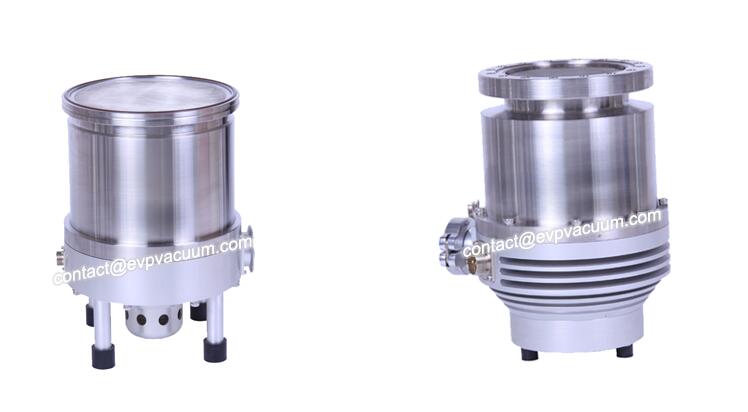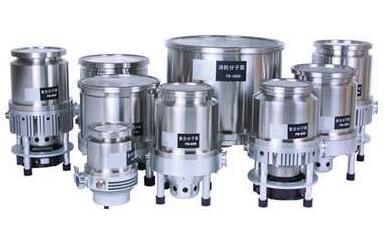Turbo molecular pump structure
The structure and the principle of turbo molecular pump
The core components of the molecular pump are rotating blades and stationary blades (Figure 2). The rotating blades rotate at a speed of 1800 to 90,000 rpm, and the speed of the blade ends reaches several hundred m/s, which is close to the average velocity of the molecules, and the gas molecules are transported to the exhaust port by collision with gas molecules. When the rotating blades are disposed at a high speed, the probability that the gas molecules move from the suction side to the exhaust side is A, and the probability that the gas molecules move from the exhaust side to the suction side is B. The rotating blade hits the gas molecules, and the gas molecules fly to the next rotating blade after hitting the fixed blade, and are finally bounced toward the exhaust port, so that A>B, the exhaust function is realized.
Molecular pump exhaust velocity = suction side opening area × 11.6 × A / B.p
In the above formular, p is the rise in pressure.
When the angle of the blade is large, the exhaust speed is large and the compression ratio is small. When the angle of the blade is small, the exhaust speed is small and the compression ratio is large. The molecular pump’s exhaust velocity is basically independent of the type of gas. The ultimate pressure of the pump can reach 10-8 Pa, but for light molecules/atoms, the exhaust velocity will be reduced.
The molecular pump is a high-speed rotating mechanical pump, so it has high requirements for balance and is very fragile to solid foreign matter. Usually, a metal filter is installed at the entrance of the molecular pump. During the operation of the molecular pump, if the pressure suddenly deteriorates, the blade may be damaged.
FB Hybrid Molecular Pump Turbo Molecular Pump
Conventional molecular pumps use bearings to ensure high speed rotation of the blades. The new molecular pump adopts the magnetic levitation structure, which makes the speed of the blade continuously increase, and makes the molecular pump suitable for the ultra-high vacuum system, which also prolongs the service life of the molecular pump.
Compared with oil-sealed rotary vane pumps and turbo-type dry pumps, the molecular pump has a cleaner working environment and can achieve extremely high vacuum. However, molecular pumps cannot operate at atmospheric pressure and must be used in conjunction with other rough vacuum pumps (oil-sealed rotary vane pumps or turbo-type dry pumps) that can operate at atmospheric pressure. Molecular pumps are complex in construction and expensive, and vibrate when working at high speeds.
tags: Rotary vane vacuum pump, turbo molecular pump
Edited by Catherine Qin / EVP Vacuum Solution
Related videos
(The article comes from the Internet. If reprinting is not allowed, please contact our company to delete it.)



